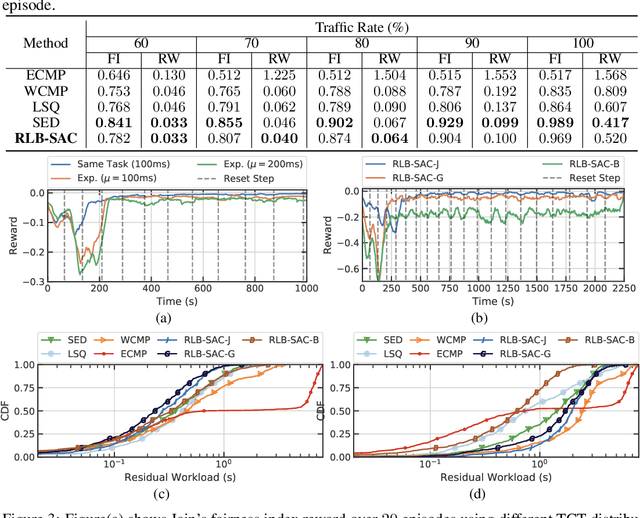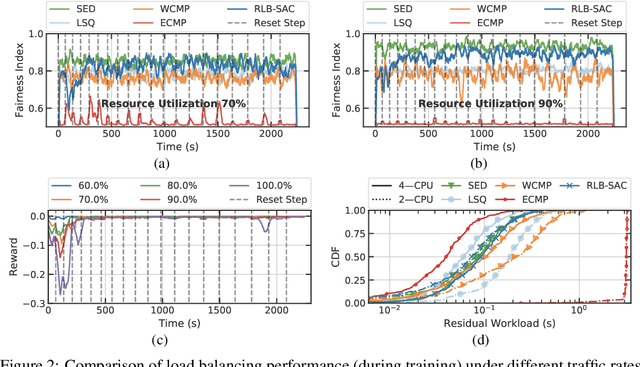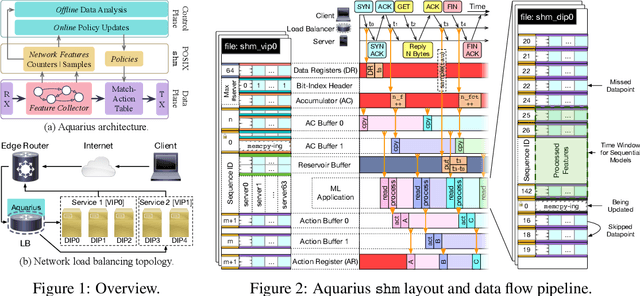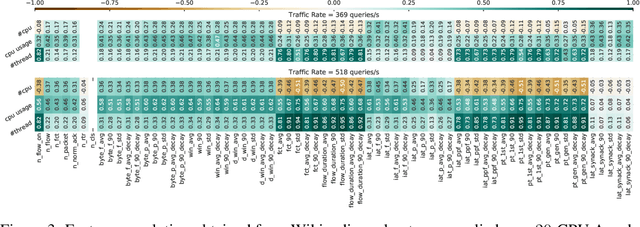Thomas Heide Clausen
Reinforced Workload Distribution Fairness
Oct 29, 2021



Abstract:Network load balancers are central components in data centers, that distributes workloads across multiple servers and thereby contribute to offering scalable services. However, when load balancers operate in dynamic environments with limited monitoring of application server loads, they rely on heuristic algorithms that require manual configurations for fairness and performance. To alleviate that, this paper proposes a distributed asynchronous reinforcement learning mechanism to-with no active load balancer state monitoring and limited network observations-improve the fairness of the workload distribution achieved by a load balancer. The performance of proposed mechanism is evaluated and compared with stateof-the-art load balancing algorithms in a simulator, under configurations with progressively increasing complexities. Preliminary results show promise in RLbased load balancing algorithms, and identify additional challenges and future research directions, including reward function design and model scalability.
Towards Intelligent Load Balancing in Data Centers
Oct 27, 2021



Abstract:Network load balancers are important components in data centers to provide scalable services. Workload distribution algorithms are based on heuristics, e.g., Equal-Cost Multi-Path (ECMP), Weighted-Cost Multi-Path (WCMP) or naive machine learning (ML) algorithms, e.g., ridge regression. Advanced ML-based approaches help achieve performance gain in different networking and system problems. However, it is challenging to apply ML algorithms on networking problems in real-life systems. It requires domain knowledge to collect features from low-latency, high-throughput, and scalable networking systems, which are dynamic and heterogenous. This paper proposes Aquarius to bridge the gap between ML and networking systems and demonstrates its usage in the context of network load balancers. This paper demonstrates its ability of conducting both offline data analysis and online model deployment in realistic systems. The results show that the ML model trained and deployed using Aquarius improves load balancing performance yet they also reveals more challenges to be resolved to apply ML for networking systems.
 Add to Chrome
Add to Chrome Add to Firefox
Add to Firefox Add to Edge
Add to Edge